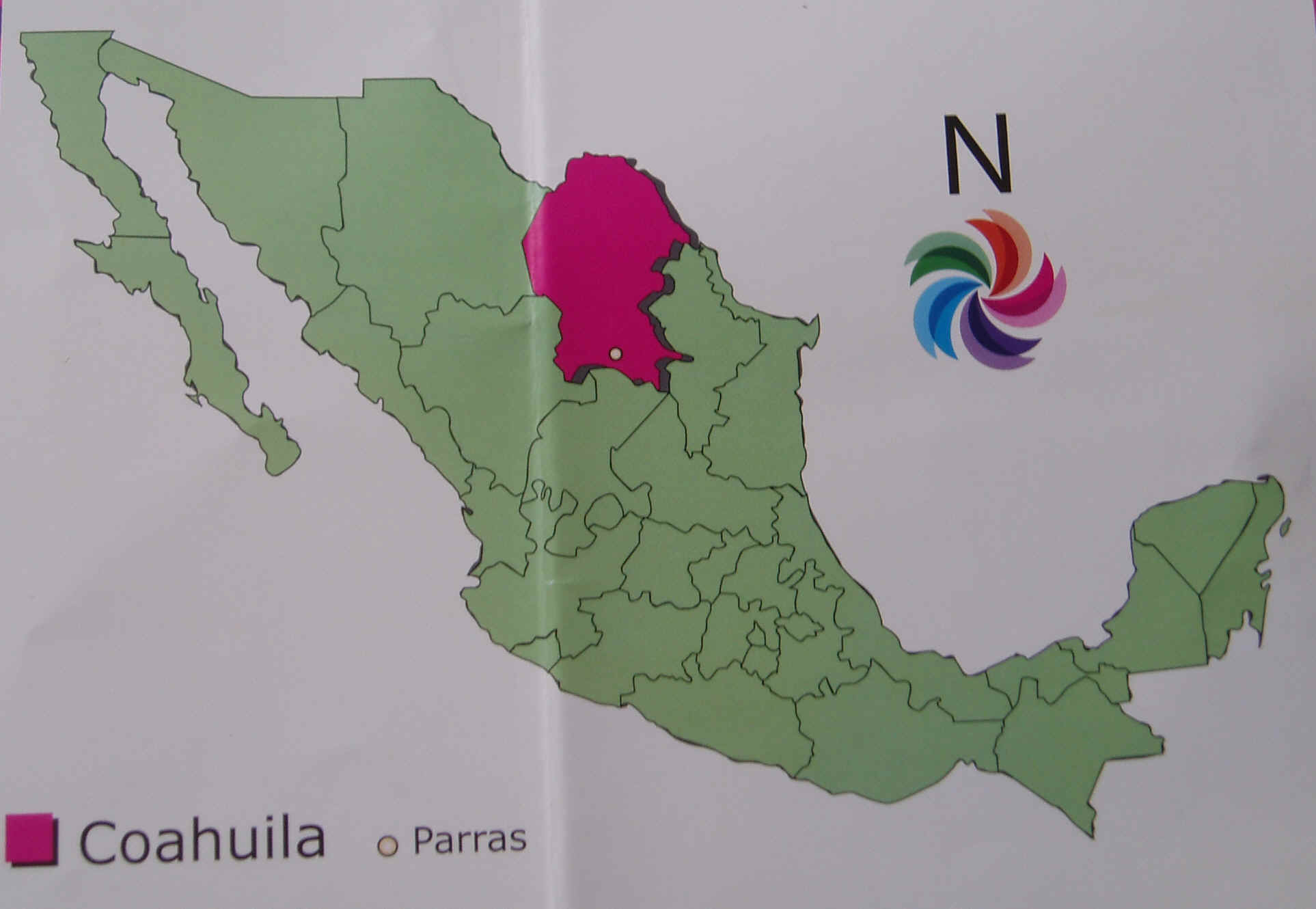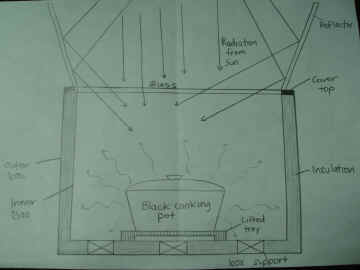
Overview:
In the summer of 2005 two students participating in the HSU Parras Program fullfilled the requirments for the ENG. 480 course by making an "appropriate technology" project. The two students Hector and Julie, embarked on a mission to build a solar box cooker in the high desert town of Parras de la Fuente, Mexico.

Design componets of a solar box cooker are shown in the diagram below.

We
used plywood for our inner box, outer box and cover top. It provided the
durability we wanted and was still manageable enough to cut and work with.
Other sites stated that we could have also used cardboard, other wood types,
bamboo, metal, bricks, cement and or plastics.
We
were able to use free wood shavings from a local craftman’s woodshop to for
effective insulation. We also placed cardboard walls between the wood
shavings to break up and restrain convection from occuring. Other types of
insulation that could be used is animal feathers, rockwool, straw, crumpled
newspapers and wool.
We chose to use a (13”x13”)single pane piece of glass that was cut at the glass store. Other options for glazing materials include double-pane glass, clear plasic, or plexy-glass.
Although reflectors are not absolutely needed, they can greatly increase the efficiency of the cooker by allowing more radiation to penetrate the glazing. We used readily available aluminum cans to make our reflectors and proved to be a cheap yet durable material. Other materials that could be used include aluminum foil and mirrors.
We raised the cooking pot off of the bottom of the inner box with a metal grill that has a 1" lift. This was to eliminate coduction from occuring. We also raised the inner box from the outer box with a wood prop to maintain the 2" spacing for insulation. We used a wood prop because wood is not a very good conductor of heat.
The research we found recommended using high quality seals. We sealed all areas where glass and wood joined, and where wood and wood joined with silicon appoxy. We did not use a moisture resistant paint because of it’s lack of availability but would recommend it as well as it being nontoxic. Where our glass-frame met the cover-top of our solar box, we used a gasket silicon that provided flexibility but also the sealant qualities we seeked.
|
The criteria we set when designing our solar box cooker is listed below...
|
To learn more about our project follow the links below
Background Materials, Tools, & Costs Construction Procedure Results
Improvements Personal Experiences Links and References